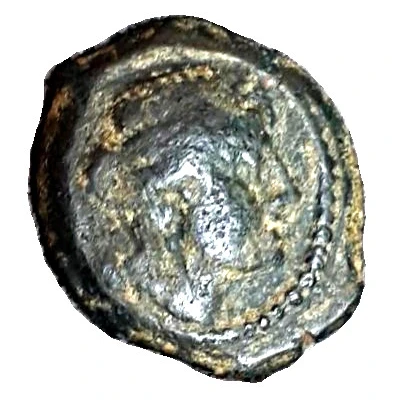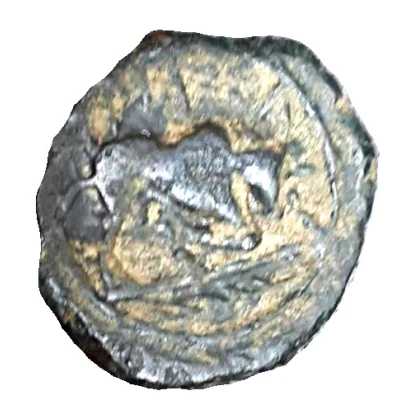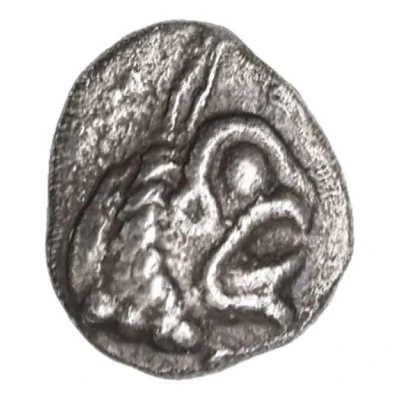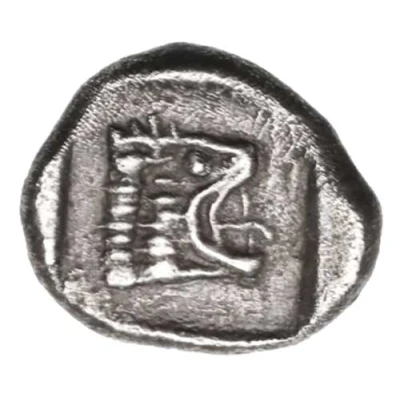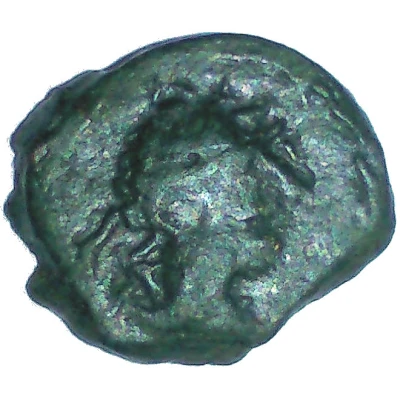
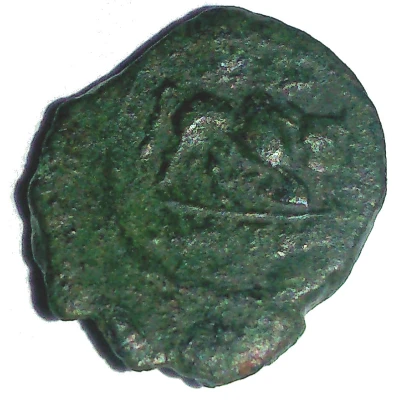

© chomp-master
Hemiobol Bull 121 BC - 49 BC
| Bronze | - | - |
| Issuer | Massalia (Gaul) |
|---|---|
| Type | Standard circulation coin |
| Years | 121 BC - 49 BC |
| Value | Hemiobol (1⁄12) |
| Currency | Phocaean Drachm |
| Composition | Bronze |
| Shape | Round (irregular) |
| Technique | Hammered |
| Orientation | Variable alignment ↺ |
| Demonetized | Yes |
| Updated | 2024-10-09 |
| Numista | N#92487 |
|---|---|
| Rarity index | 94% |
Reverse
Bull butting right
Script: Greek
Lettering:
ΜΑΣΣΑ
ΛΙΗΤΩΝ
Translation: Massalia
Edge
Plain
Interesting fact
The Hemiobol (Bull) coin was used as a form of currency in the ancient Greek city of Massalia, which is now modern-day Marseille, France. The coin features an image of a bull on one side and the Greek god Apollo on the other. The coin was made of bronze and had a distinctive "keyhole" shape, which made it easily recognizable and harder to counterfeit. Despite being over 2,000 years old, some of these coins have been well-preserved and can still be found in collections and museums today.
